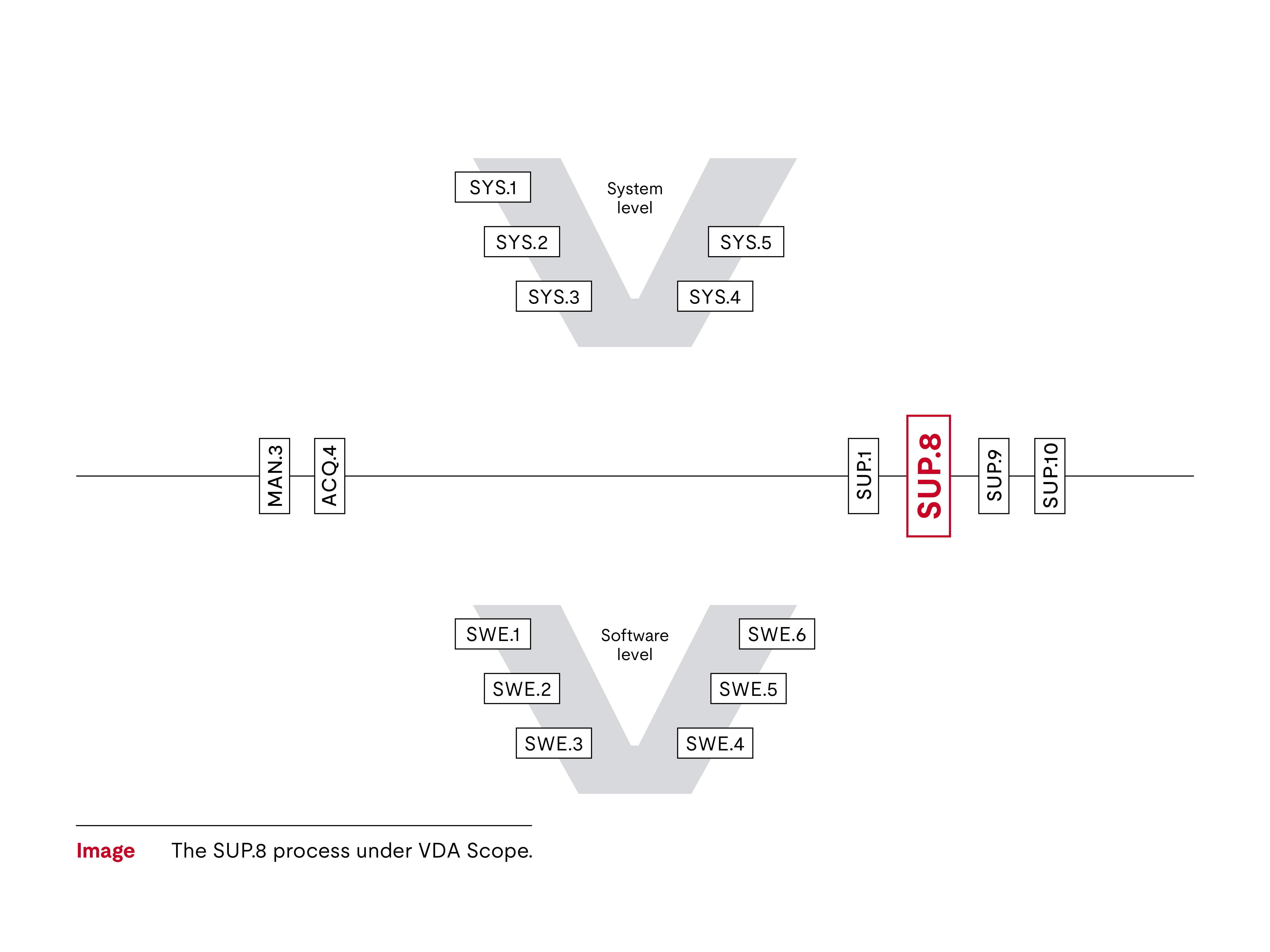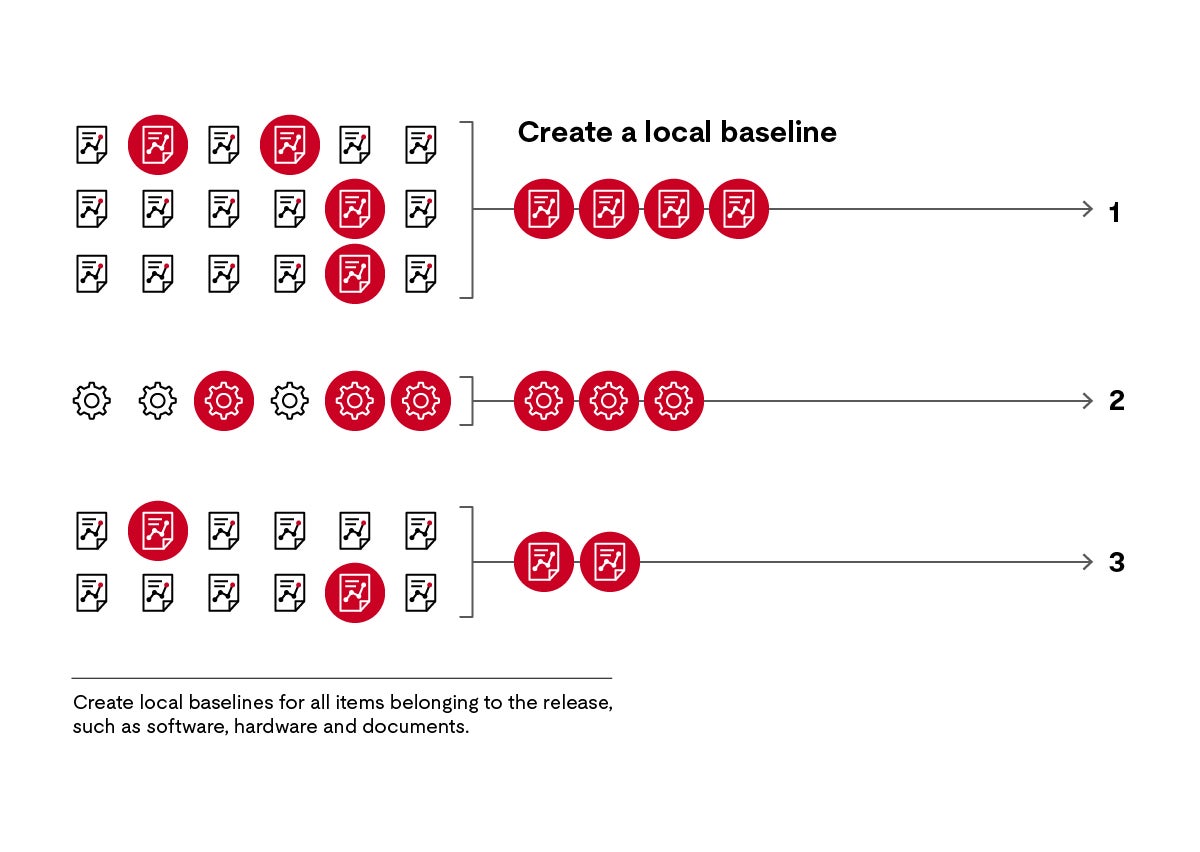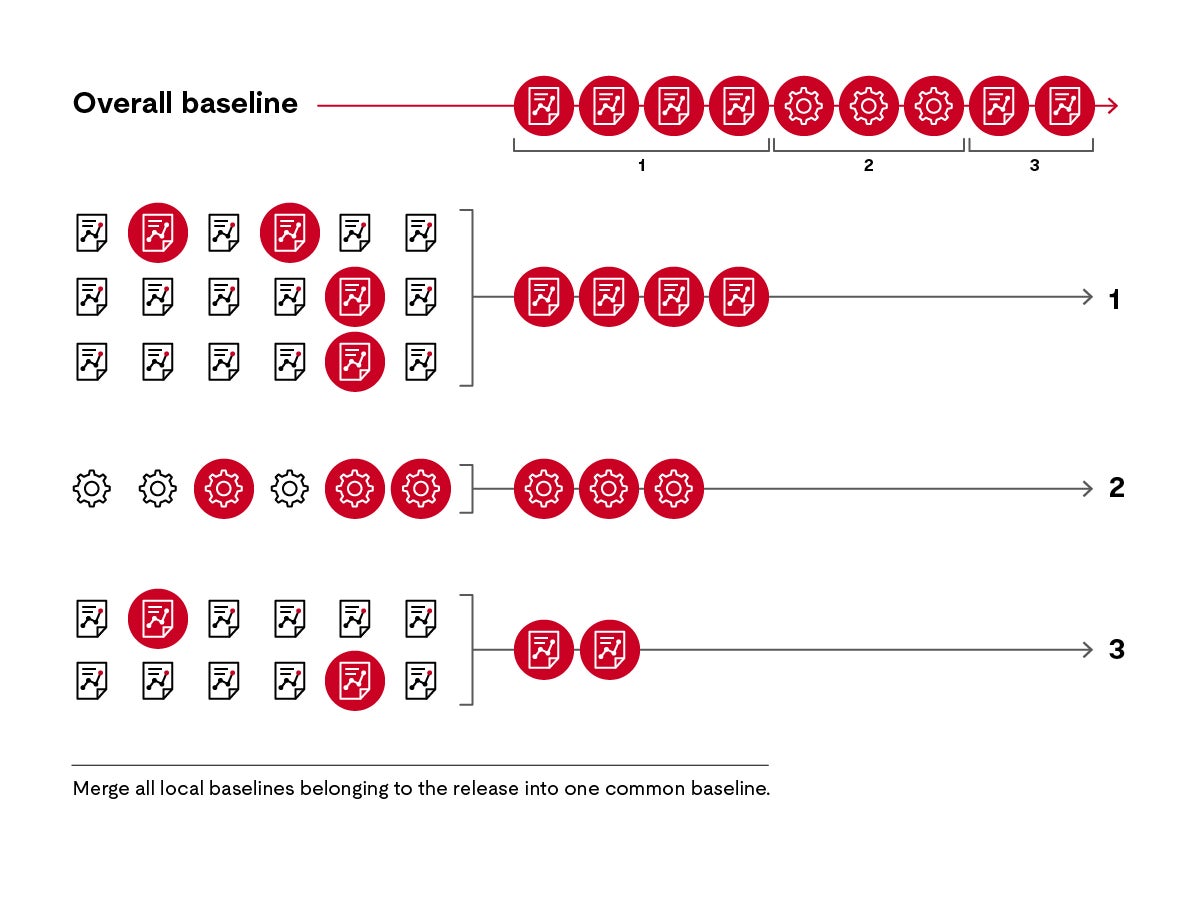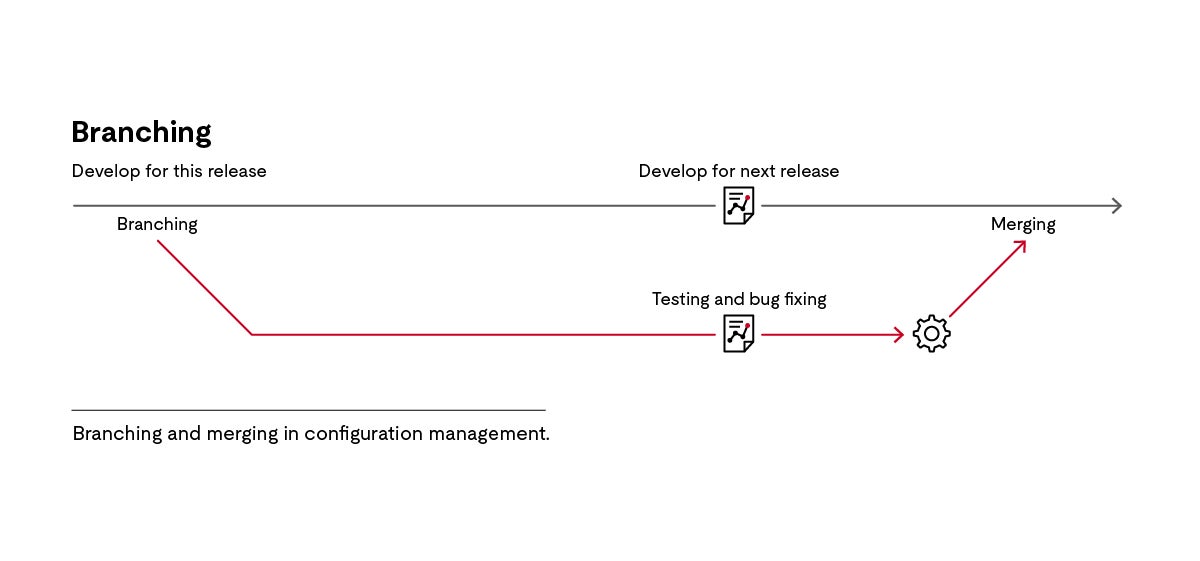

Process ID: SUP.8
Process group: Support
Automotive SPICE® is a trademark of VDA QMC.
Project team members typically create many new versions of code, documentation, drawings, etc., every day. Managing changes, monitoring consistency and subsequently building a product from them can be tedious and prone to errors. Configuration Management (SUP.8) allows you to manage how you can decouple customer-specific releases in regular, day-to-day research and development (R&D) while still maintaining transparency into the development project.
The Configuration Management process in Automotive SPICE® can help your organization demonstrate the integrity of all work products and is one of the most important core processes of Automotive SPICE®. In the following paragraphs, we discuss the most important aspects of Configuration Management and how to implement the process in your organization.
3 key aspects of the Automotive SPICE® Configuration Management Process (SUP.8)
1. Build a configuration management system that covers all development activities.
Your configuration management system must store everything needed to define your product. If your product consists of software, hardware and mechanical components, you will have bills of materials, drawings, requirements, design, code, tests, and so on. If these items are stored in different configuration tools (software products capable of versioned storage of information), how can you manage the relationships among these different versioned items for a final product version?
The diagram below shows our approach.

In the diagram, each symbol represents an item. The local baseline encompasses all software elements that we will use to create the next software version. We assign a label to this baseline that uniquely identifies this baseline and its items. In our diagram, we label the local baseline #1.
We also uniquely label the hardware components that will be used to create the next version of the printed circuit board as a second local baseline (#2).
We continue doing this for drawings, requirements, design, code, tests, etc. (#3).
We place all labels in one configuration management tool and define the overall baseline, as shown below.

As shown in the diagram, you can use one of the software tools as the leading tool and describe the complete product through local baselines and a superordinate overall baseline.
2. Decide what to place under configuration management.
Unnecessarily placing items under configuration management can waste project resources. Determine which items to place under configuration management by considering whether you:
- Need the item to build the product.
- Need the item to describe the product.
3. Define how to handle branching and merging correctly.
In software development, several developers may work on the same code at the same time, which can lead to major inconsistencies. The diagram below shows how we can merge them without causing conflicts.

When you merge the two versions, the configuration management tool highlights both types of changes. You have to define a rule for how to handle this — for example, “the person making the last change is responsible for performing a code review and resolving any conflicts.” You should also define rules for what types of branches and merges are allowed in various situations.
Setting up and implementing a configuration management strategy can help you to:
- Implement powerful change request management functionality.
- Keep control of releases.
- Prevent customer dissatisfaction.
Why choose UL Solutions Software Intensive Systems for Automotive SPICE® support?
UL Solutions Software Intensive Systems can support automotive original equipment manufacturers (OEMs) and suppliers in:
- Achieving the required capability levels within key development processes.
- Systematically improving existing workflows and methods.
- Evaluating the status of process improvements through formal assessments and gap analysis.
- Fulfilling the requirements of Automotive SPICE® in harmony with security, functional safety and agile methods.
- Training staff and assessors.
Learn more about the Automotive SPICE® configuration management process
Interested in deepening your understanding of the Automotive SPICE® configuration management process (SUP.8)? Watch our video.
Get connected with our team
Thanks for your interest in our products and services. Let's collect some information so we can connect you with the right person.
